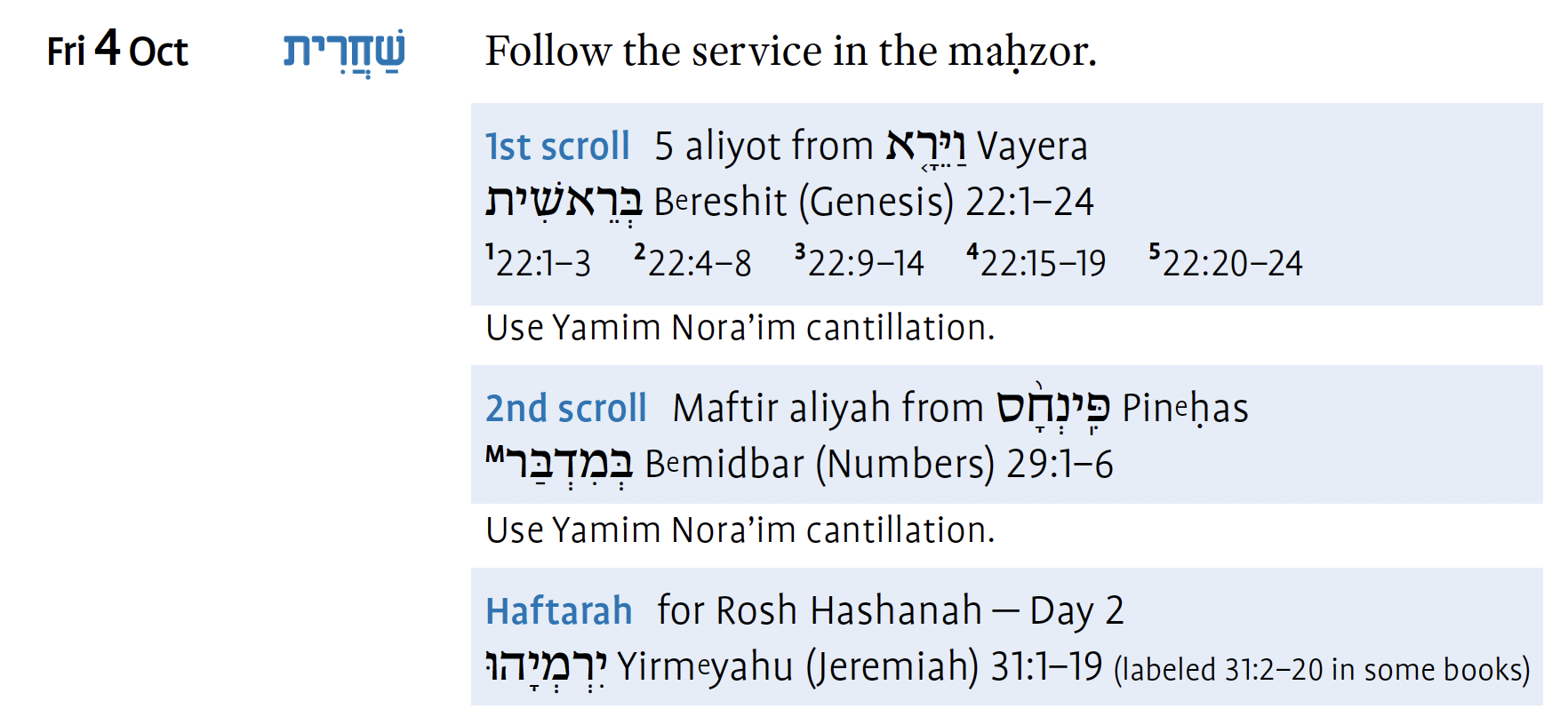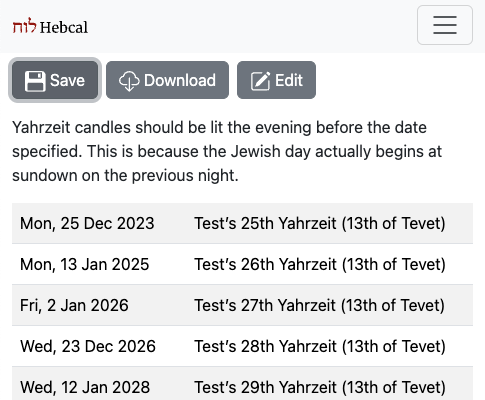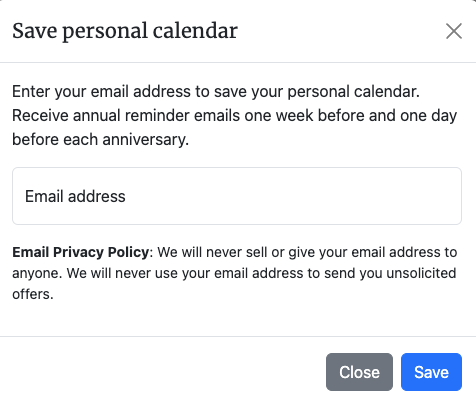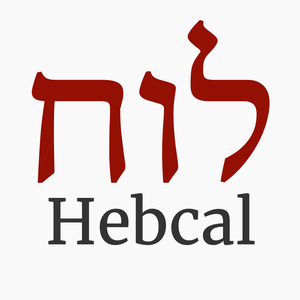Your comments
Thanks for writing. Hebcal agrees with the conservative Luach, which is published by Rabbi Miles Cohen. See below:

We will investigate further why some books list this as 31:1-19 and others list as 31:2-20.
For example, Mechon Mamre lists chapter 31:1 as Ko amar Adonai matza chein bamidbar
The Hebrew date converter is not designed to be accurate for year 1752 C.E. and earlier.
Hebcal does not take into account a correction of ten days that was introduced by Pope Gregory XIII known as the Gregorian Reformation.
Where do you see י״ד טבת תתק״ס on Hebcal.com for 1/1/2200 ? Here is what we see:
https://www.hebcal.com/converter?gd=1&gm=1&gy=2200&g2h=1
- Wed, 1 January 2200 = 13th of Tevet, 5960
- י״ג בְּטֵבֵת תתק״ס
After you've created your personal yahrzeit + anniversary calendar, you can subscribe to email reminders after saving your calendar.
First, click the grey Save button near the top of the page

Then, fill out your email address and click the blue Save button

A confirmation message will be sent to your email address. Click the link within that message to confirm your subscription.
Thanks for using the Hebcal Yahrzeit + Anniversary calendar. Since the focus of the website is on Hebrew calendar and most regular calendar apps (Apple, Google, Outlook, etc) can already handle repeating/recurring Gregorian events, this hasn't been a very high priority for us. We will take this idea under consideration.
Glad this worked for you. Shabbat shalom & shana tova!
Several websites (Hebcal, Chabad, TorahCalc) all agree that Sun, September 29, 2239 = 29th of Elul, 5999.
Perhaps there's an error in your VBA program?
Hi, we've made a temporary workaround where Google Calendar reminders will be fixed to either Israel Time if you check the "Israel Yizkor schedule", or Eastern Standard Time for all other calendars. This is not a very ideal fix, as it delivers Yahrzeit candle reminders at the wrong time for other locations, but it will work for a large fraction of the Hebcal user base.
Thanks for using Hebcal. Your device is using light/dark appearance switching automatically.
Depending on what kind of device you use, you can follow instructions like the following to enable or disable the automatic change from light mode to dark mode
Windows
macOS
https://support.apple.com/guide/mac-help/use-a-light-or-dark-appearance-mchl52e1c2d2/mac
Android:
https://support.google.com/android/answer/9730472?hl=en
iPhone and iPad
https://support.apple.com/en-us/108350
Customer support service by UserEcho


If you set &yt=H (which it appears you are doing) but you don't want to specify a Hebrew year explicitly, you should consider using &year=now for the current Hebrew year.
If you don't specify year= (or start= and end=), I believe the API will default to the current Hebrew year from 1 Tishrei - 15 Av, and the following Hebrew year starting on the 16th of Av.